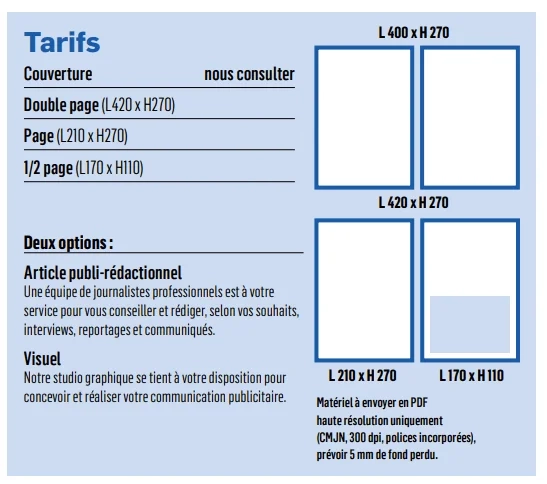Space not available
Reserve this advertising space
Selected ad format
The file format is not recognized
Click here for
upload an ad
Click here to download
an announcement
Here drag and drop or
upload an ad
Send the ad up to 8 days after payment
A link will be sent to you by contact@via-agency.media
Reserved space
Announcement transmitted
Reference
– An abundant supply of quality labor

Cameroon's young population is capable of providing an abundant, high-quality workforce, representing one of the greatest potentials for high-intensity industrialization with competitive production costs.
Space not available
Reserve this advertising space
Selected ad format
The file format is not recognized
Click here for
upload an ad
Click here to download
an announcement
Here drag and drop or
upload an ad
Send the ad up to 8 days after payment
A link will be sent to you by contact@via-agency.media
Reserved space
Announcement transmitted
Reference
To reduce infrastructure disparities in higher education between regions, the Cameroonian president has decided to create three new state universities. The East, North, and South regions will soon each have their own state university. With these three new institutions, Cameroon brings the total number of its state universities to 11, one in each region except the Central region, which has two, namely the University of Yaoundé I and the University of Yaoundé II. The Faculty of Medicine/Biomedical Sciences, the new Universities of Ebolowa (Sangmélima) and a Higher Institute of Wood, Water, Environment, and Agriculture in Bertoua (Bélabo) will be operational for the start of the 2023 academic year.
The Secondary Education and Qualifications Development Project is in line with the government's strategy for the education sector 2021-2030. In the education and training sector, the government's vision is to promote an education system in which every young graduate is sociologically integrated, bilingual, and competent in a field crucial to the country's development.
The strategic objectives pursued are: to guarantee access to primary education for all school-age children; to achieve a completion rate of 100% at the primary level; to reduce regional disparities in terms of school infrastructure and teaching staff; and to increase the provision of vocational and technical training from 10 to 25% at the secondary level and from 18% to 35% at the higher level.
In Cameroon, the workforce is large but underemployed, and disparities between urban and rural areas persist. Therefore, the government intends to use the labor-intensive approach (HIMO) to create approximately 100,000 jobs in the country between 2020 and 2025, as part of the national integrated program for the development of decentralized territorial communities (CTD).
Space not available
Reserve this advertising space
Selected ad format
The file format is not recognized
Click here for
upload an ad
Click here to download
an announcement
Here drag and drop or
upload an ad
Send the ad up to 8 days after payment
A link will be sent to you by contact@via-agency.media
Reserved space
Announcement transmitted
Reference
The demand for sustainable and decent jobs is indeed growing day by day. Both the public and private sectors are called upon to find mechanisms to increase the number of jobs. 287,690 jobs is the number of jobs to be created in 2022 according to the International Labor Office (ILO). This forecast is the result of a study conducted by the government with the support of the ILO. This projected recruitment of 18,210 managers, 60,000 technicians, and 208,674 workers is thus envisaged. According to the economic report of the National Observatory of Employment and Vocational Training (ONEFOP) presented in June 2022, we are witnessing a real growth in the number of decent jobs in Cameroon.
40% of highly qualified Cameroonian labor works abroad
As the most diversified economy in Central Africa, Cameroon has experienced steady growth for the past ten years and is aiming for emerging country status by 2035. To this end, the government has launched an ambitious program to boost the economy and promote job creation.The creation of work-study institutes for development (IFAD) was born from the Head of State's desire to provide Togolese youth with the means and tools to support the country's development. Ten are planned across the country. The first IFAD-Elevage was established in 2019 in Elavagnon in the plateaus, dedicated to aquaculture professions. The second establishment, dedicated to construction and renewable energy professions, was inaugurated in April 2021 in Adidogomé in the northwest suburbs of Lomé. It consists of around twenty classrooms connected to broadband and powered by a mini solar power plant. The ambition is to substantially reform vocational training to make it easier for graduates to obtain qualifications. Indeed, with the IFADs, the Public-Private Partnership is a reality in the education system. Based on the work-study principle, training is provided half-time at IFAD between classes and workshops, and half-time in the workplace. Thanks to personalized support and dynamic, interactive courses, the learner becomes a qualified human resource ready to engage in employment. To accelerate national development, certain sectors have been identified as priorities: aquaculture, livestock farming, construction, hospitality, logistics, and digital technology.
Private higher education has been liberalized in Togo, thus promoting the emergence of Private Higher Education Schools, partners of the State in training in order to counter the mass increase in students in public universities.
Togo has adopted a national research and innovation policy, covering a 10-year period (2020-2030), under the leadership of the Ministry of Higher Education and Scientific Research. This new policy aims to address the country's research weaknesses and define its broad guidelines, taking into account its economic and development ambitions, particularly in connection with the National Development Plan (NDP). Above all, it aims to address the funding challenge by ultimately increasing the share of national GDP devoted to research.
Space not available
Reserve this advertising space
Selected ad format
The file format is not recognized
Click here for
upload an ad
Click here to download
an announcement
Here drag and drop or
upload an ad
Send the ad up to 8 days after payment
A link will be sent to you by contact@via-agency.media
Reserved space
Announcement transmitted
Reference

















 A Seat That Transforms into a Bed
A Seat That Transforms into a Bed  In the world of air travel, economy class is often considered the most affordable option. However, at Air Afrika, we believe that affordability shouldn't mean compromising on quality of service. Our class
In the world of air travel, economy class is often considered the most affordable option. However, at Air Afrika, we believe that affordability shouldn't mean compromising on quality of service. Our class









